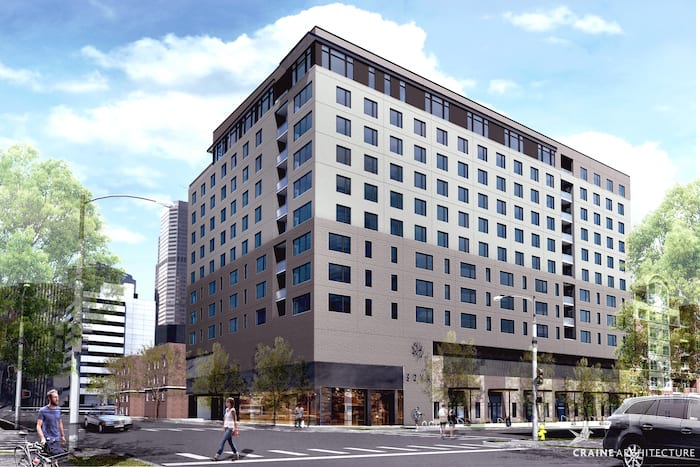Find Stability in MF Development: Take Long-Term Investment Approach

BUILDING DIALOGUE
If one thing is certain in today’s unpredictable development market, it’s that nothing is certain. Tariffs, fluctuating interest rates, labor shortages and rising costs all have contributed to one of the more volatile markets in recent memory.
Overall construction costs are on the rise for various reasons. Lumber and steel prices neared all-time highs in summer 2018 in response to tariffs intended to balance trade and protect domestic production. We’ve now seen some of those commodity prices come back down.
Colorado’s economy in many regards outpaces the national economy, and massive public and infrastructure projects are coming on line, compounding a skilled labor shortage. The Denver International Airport renovation and Central 70 Project in Denver, for example, draw upon the same skilled laborers, stretching thin an already limited labor pool as a result of the state’s robust economy, which pushes labor costs higher.
But a long-term multifamily strategy can help insulate developers from market volatility, and perhaps provide an advantage over competing developments with a shorter time horizon. Developers with patient equity and longer-term debt can limit the timing risk. This investment approach is compelling to many high net worth investors looking for a safe place to park capital.
Such a long-term development approach also can provide greater stability during the predevelopment process. Monitoring quarterly trends and weekly leasing reports is important, but a macro-level focus on population and job growth statistics also ought to be evaluated. An area poised for growth over the next one to three decades provides a prime opportunity to identify the best value options in the particular submarket.
The next economic slowdown isn’t a question of if it will happen, but when. Meanwhile, a fairly steady vacancy rate in light of record supply in markets such as Denver and Northern Colorado is evidence of continued demand for multifamily development.
For example, our team recently delivered the Ride Apartments project in Denver’s RiNo neighborhood adjacent to the 38th & Blake transit station. This development is unique in that all units are micro-studio apartments, most of which are roughly 400 square feet. While the rent per square foot is high, the effective rent tenants pay is lower than most options in the neighborhood. When developers focus on long-term investments, creative approaches ensure the relevancy of the development for years to come.
Consumers benefit from this long-term strategy as well. Developing and holding onto an asset for the foreseeable future allows for a product to feature higher-quality finishes.
Building and designing a property with higher-end finishes, amenities and features that address noise and acoustics – a top concern in multifamily buildings – certainly costs more up front. However, ongoing maintenance costs are lower over time and renters are attracted to the build quality and finishes, typically leading to higher occupancy rates.
For instance, SOVA on Grant in Denver’s Uptown neighborhood broke ground in May 2017 and will consist of 211 new apartment homes once complete. Amenities planned at the 12-story building at the corner of 19th Avenue and Grant Street include a golf simulator, spa, barbecue area and lounge, rooftop deck, fitness center, bike and ski repair room, and dog wash and electric-vehicle charging stations. The property will incorporate sustainable features into its design, ultimately providing energy and water cost savings to residents.
Whether the development is urban or suburban, property management and developing within mixed-use areas also serve as critical considerations in executing a long-term focus. Incorporating unique lifestyle amenities that create a dynamic living environment help ensure the multifamily community remains in demand. It is important for a multifamily development to lie within a path of growth and urban-like surroundings, even if it is located within a suburban environment.
Located in McWhinney’s Centerra master-planned community in Loveland, Railway Flats – which broke ground in the second half of 2018 – embodies this concept. Planned in two phases, the project will add 420 multifamily homes to Northern Colorado with direct community connections to Centerra’s multitude of retail, dining, art and entertainment amenities.
A long-term multifamily strategy not only helps protect developers from market unpredictability; it also can help provide attainable housing options featuring the high- quality and diverse amenities consumers want, representing an investment in the long-term vibrancy of Colorado communities.












